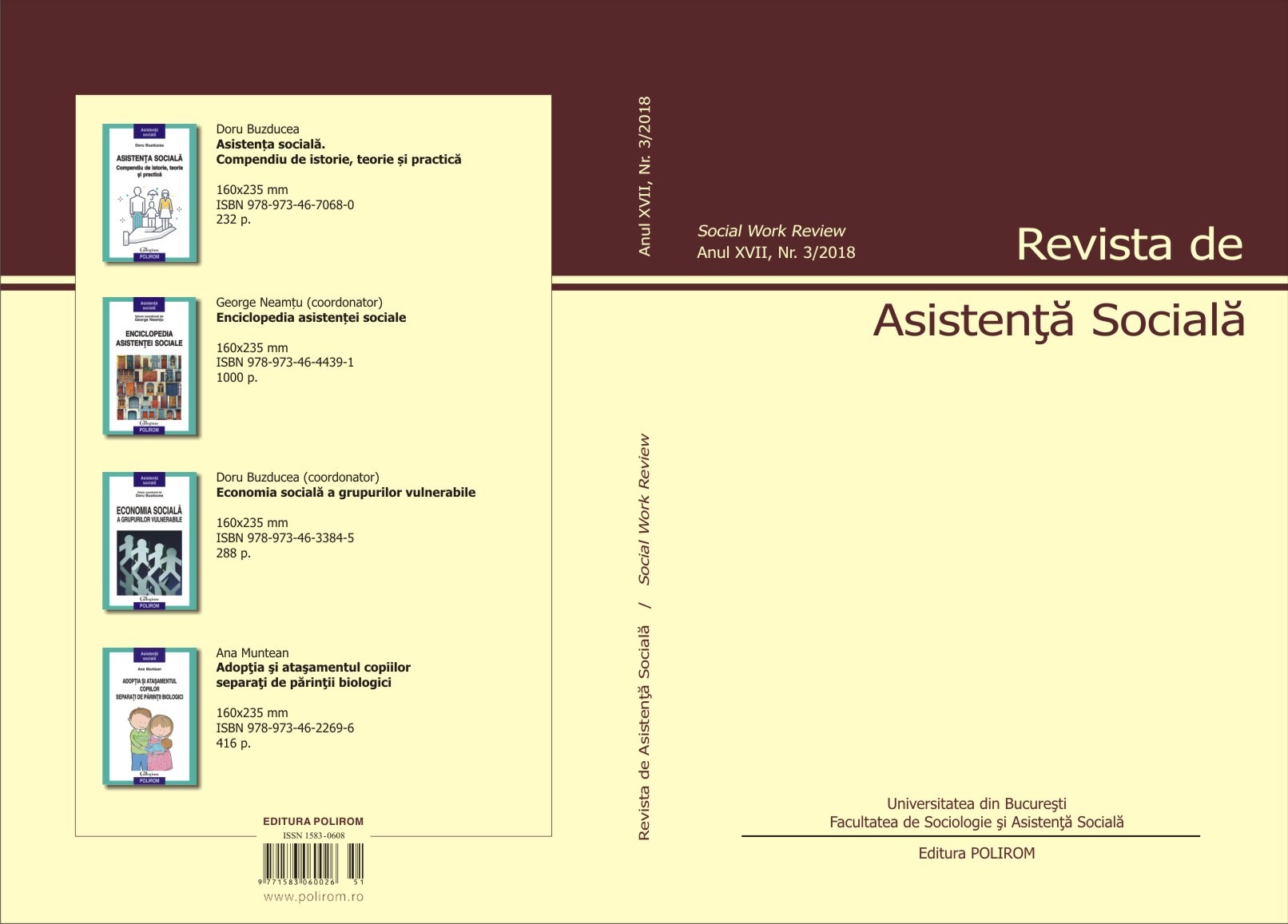A Realistic Vision of the Practical and Social Needs of People with Terminal Diseases
A Realistic Vision of the Practical and Social Needs of People with Terminal Diseases
Author(s): Alina Simona HoarăSubject(s): Health and medicine and law, Family and social welfare
Published by: POLIROM & Universitatea Bucureşti - Dept. de Sociologie şi Asistenţă Socială
Keywords: palliative services; trauma; social worker; ageing; quality of life
Summary/Abstract: Social services appeared as a necessity in helping the vulnerable groups that formed as a result of the social changes they could not be handled. Because of the globalization process and social changes that arose, the social services had to adapt and try to find solutions to problems like migration, natural disasters, abandoned children by parents who went abroad, old people that remained alone, who often confronted with diseases. People with terminal diseases need special attention, they often need medical support, but also family and social support in order to improve their life quality for the remaining of their lives. The trauma of the people who are living their last days has to be of utmost importance in creating an individualized intervention plan. The purpose of palliative services is to reduce the suffering of the pacients and their families in order to maintaini the quality of their lives. Palliative services across Europe are on the rise because of the aging population, which can be felt in Romania as well. The professionals in the multidisciplinary team who handle the cases that require palliative care have to focus on measures that have as a purpose maintaining the patient within the family. This is possible by developing home palliative services and policies, which should represent a priority for Romania. The professionals should not be neglected as they require proper training so that they don’t develop secondary trauma. This study was developed on the statistics issued by ANIP (Asociatia Natională de Îngrijiri Paliative – National Palliative Cares Association) and other relevant studies in the field.
Journal: Revista de Asistenţă Socială
- Issue Year: 2018
- Issue No: 3
- Page Range: 143-149
- Page Count: 7
- Language: English
- Content File-PDF

